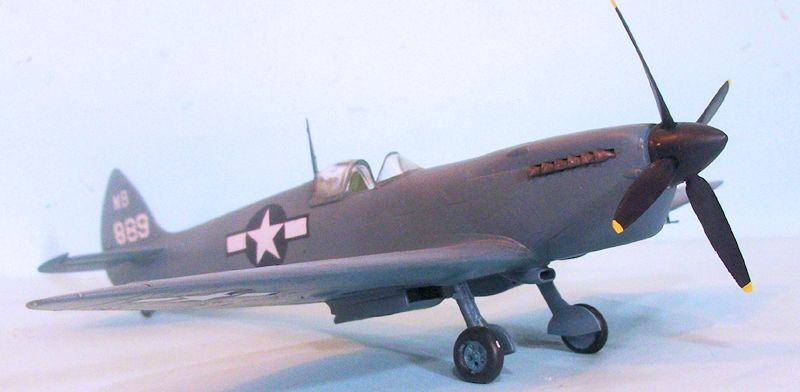
Airfix/Aeroclub 1/48 Spitfire PR XI
| KIT #: | |
| PRICE: | $ |
| DECALS: | |
| REVIEWER: | Tom Cleaver |
| NOTES: | Kitbash |

| HISTORY |
The Photo-Recon Spitfire:
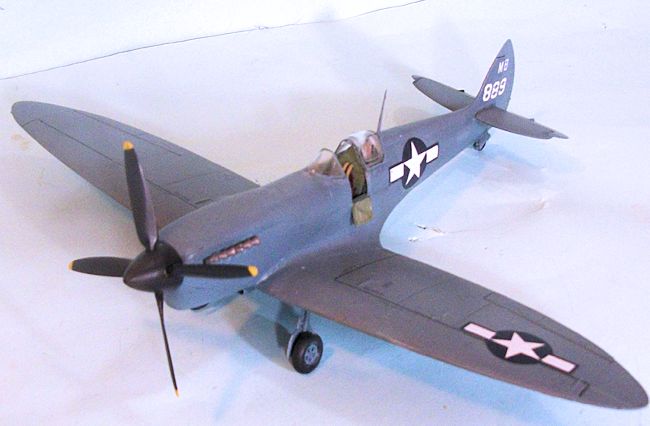 The Spitfire became the primary RAF photo-reconnaissance platform in
World War II, beginning with aircraft modified from the Spitfire I and II
airframes.
All armament was removed
and various methods of adding additional fuel capacity were developed, as the
Spitfire P.R.IV series.
The Spitfire became the primary RAF photo-reconnaissance platform in
World War II, beginning with aircraft modified from the Spitfire I and II
airframes.
All armament was removed
and various methods of adding additional fuel capacity were developed, as the
Spitfire P.R.IV series.
The PR Mk XI was produced in greater numbers than any other PR variant,
with over 470 produced in total.
Based on the Mk IX fuselage, it had the extra fuel tanks of the standard PR
variants as well as wing tanks utilizing the areas of the wing given over to
armament in the fighter versions. It entered service in the summer of 1943.
The P.R. Mk XI used a universal camera installation, which allowed the
cameras to be easily changed. This allowed a much wider variety of cameras to be
used, allowing a variety of missions to be flown. Common installations included
two F.52 cam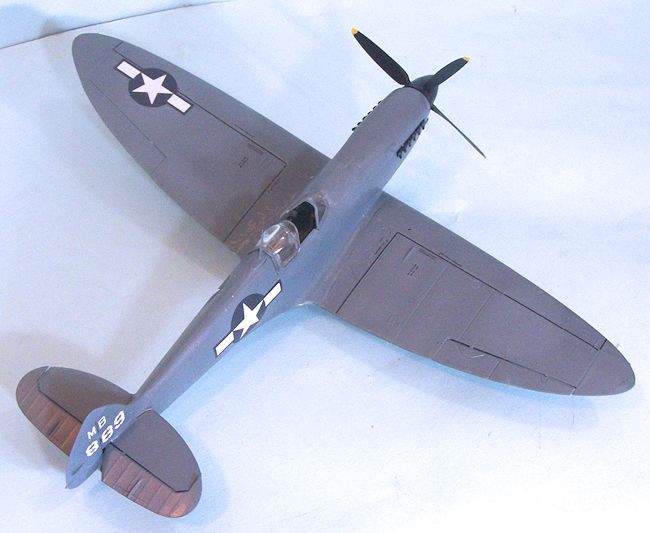
Originally, the USAAF intended to use the F-4 and F-5 photo recon
variants of the P-38 for their reconnaissance needs in the ETO.
The difficulties encountered with operating P-38s at high altitude over
Europe also manifested themselves with the F-4s and F-5s; engine failure on an
operation was almost a guarantee the airplane would be lost, since it would be
unable to operate higher or faster than the fighters sent to hunt it.
In the spring of 1944, the Seventh Photo-Recon Group at Mount Farm
received Spitfire Xis.
One of the
first missions flown was to Berlin to photograph damage from the first daylight
mission to Berlin on March 6, 1944.
| THE KIT |
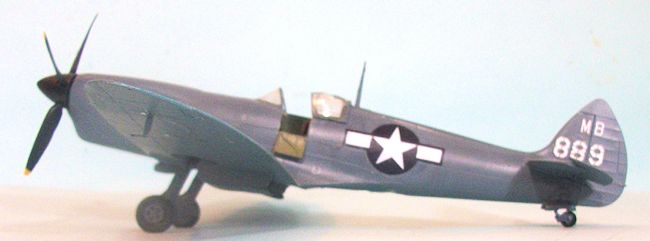
| CONSTRUCTION |
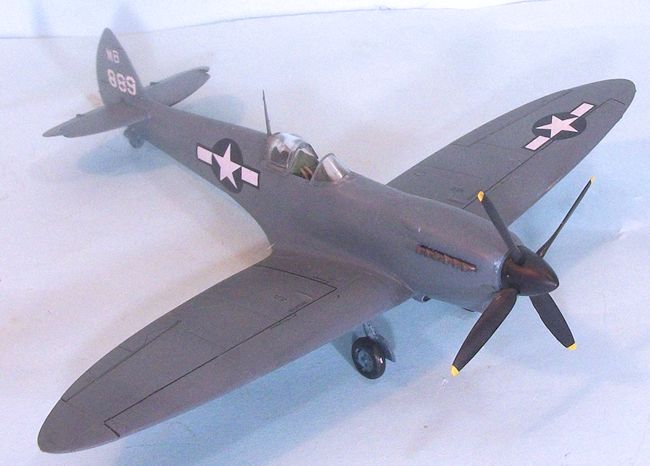 Having kitbashed the Spitfire XIV using the Airfix Spitfire P.R. XIX
fuselage, I had the wing left over.
I had one of the Aeroclub Spitfire IX fuselages that were created to correct the
fuselage in the Hasegawa kit, and discovered with a little test-fitting that the
Aeroclub fuselage and the Airfix wing could fit without a lot of difficulty.
I also used the later horizontal stabilizer and elevators, and the late
rudder, from the Eduard Spitfire IXc (early) Weekend Kit that were left over.
The cockpit came from the Airfix kit.
Having kitbashed the Spitfire XIV using the Airfix Spitfire P.R. XIX
fuselage, I had the wing left over.
I had one of the Aeroclub Spitfire IX fuselages that were created to correct the
fuselage in the Hasegawa kit, and discovered with a little test-fitting that the
Aeroclub fuselage and the Airfix wing could fit without a lot of difficulty.
I also used the later horizontal stabilizer and elevators, and the late
rudder, from the Eduard Spitfire IXc (early) Weekend Kit that were left over.
The cockpit came from the Airfix kit.
The model was painted with Xtracrylix PRU Blue.
| CONCLUSIONS |
Altogether, not a difficult kitbash. I would have used the Falcon vacuformed fuselage had I had one, though one would also have to modify the upper cowl of that to correct the inaccurate overall shape there.
October 2014
Review kits courtesy of my wallet.
If you would like your product reviewed fairly and fairly quickly, please contact the editor or see other details in the Note to Contributors.